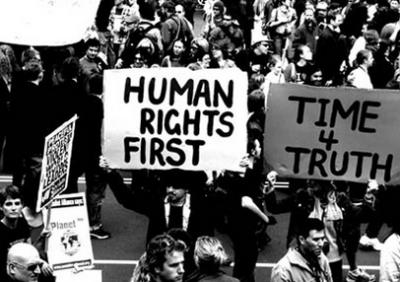Counterculture Through The Ages
From Londonhua WIKI
Revision as of 12:18, 7 June 2017 by Ekmceachern (talk | contribs)
Contents
The History of Counterculture
 Counterculture of the 1960s |
Abstract
This project aims to give a complete understanding of what counterculture is and where examples of it can be found in history. Also, it attempts to identify the counterculture of today. When people think of counterculture most of the time hippies and the 1960s will pop into their head, but time periods like the enlightenment can also be considered counterculture by its definition. At WPI I have taken 2 History courses and 1 Philosophy course: HI 1332, HI 2332, and PY1731.
Introduction
I suggest you save this section for last. Describe the essence of this project. Cover what the project is and who cares in the first two sentences. Then cover what others have done like it, how your project is different. Discuss the extent to which your strategy for completing this project was new to you, or an extension of previous HUA experiences.
As you continue to think about your project milestones, reread the "Goals" narrative on defining project milestones from the HU2900 syllabus. Remember: the idea is to have equip your milestone with a really solid background and then some sort of "thing that you do". You'll need to add in some narrative to describe why you did the "thing that you did", which you'd probably want to do anyway. You can make it easy for your advisors to give you a high grade by ensuring that your project milestone work reflects careful, considerate, and comprehensive thought and effort in terms of your background review, and insightful, cumulative, and methodical approaches toward the creative components of your project milestone deliverables.
Section 1: Background
What is Counterculture?
A counterculture, "rejects or challenges mainstream culture or particular elements of it" [1]. A counterculture action aims to show opposition, disagreement, and/or rebellion towards current culture in place. Some ways counter culture is often displayed is through protesting against a particular issue, rebelling against an established way of doing things, trying to overcome oppression, and even creating a new culture when the current one in place is dissatisfying[2]. Methods used to express countercultural points of view are meant to promote action and provoke change among people. Often the unacceptability of counterculture is eventually taken as a normality by the general population and considered mainstream culture, this also makes it very difficult to identify counter culture until a few years after it has originated.
Methods
Demonstration
Demonstation is used as a way for people to come together to physically protest against a particular situation that they do not agree with[3]. Demonstrations can sometimes turn into violent riots but in general they are one of the more peaceful forms of taking direct action against something. Peace protests have emerged to protest the threat of war and even the development of dangerous technologies like nuclear technology[4].
Civil Disobedience
Historically, peace movements have been split on the decision to take more radical approaches of protest, like civil disobedience, over demonstration. Civil disobedience, like demonstration, is a form of direct action but it differs from demonstration because laws are broken in order to force an issue onto a political stage[5]. People for civil disobedience argue that small crimes, like the disruption of streets, are okay because they are protesting a much large crime or issue, like war or environmental damages. However, in the eyes of authorities, the breaking of a law is never okay and participants of civil disobedience are often treated as trespassers.
In England, the philosopher Bertrand Russell was an advocate for civil disobedience and participated in sit-ins as a founder of the Committee of 100[6]. A sit in uses disruptions to attract attention to the cause that is being protested against. During a sit in protestors will sit in an area and refuse to move until their wants are met or they are removed by the auhorities[7]. This method of protest was first used by Mahatma Gandhi and later adopted by others like Martin Luther King Jr. during the Civil Rights Movement.
Civil disobedience was also used by some of Bertrand Russell's Committee of 100 in the 1960s to find out and expose secret government information. Calling themselves the Spies for Peace, they supported people breaking into military bases and finding classified military information.
Living Demonstration
An example of living demonstration is squatting, where a person occupies an empty property without the owners permission or knowledge. To demonstrators this method is both practical an symbolic because it gives a place for homeless people to live and also raises awareness to the issue of homelessness. The issue of homelessness in London has been a controversial and serious one for a very long time and the development of the squatters movement in the 1960s relied on press coverage to get its message across[8].
Disruption
Underground Press
Do it Yourself
The Enlightenment
Suffrage
Civil Rights Movements
The 1960s
Section 2: Deliverable
Today's Counterculture
Gallery
Conclusion
In this section, provide a summary or recap of your work, as well as potential areas of further inquiry (for yourself, future students, or other researchers).
References
- Counter Culture. (2006, September 22). Retrieved June 06, 2017, from http://www.bl.uk/learning/histcitizen/21cc/counterculture/counterintro.html
Image Gallery
If appropriate, add an image gallery
- ↑ Counter Culture. (2006, September 22). Retrieved June 06, 2017, from http://www.bl.uk/learning/histcitizen/21cc/counterculture/counterintro.html
- ↑ Counter Culture. (2006, September 22). Retrieved June 06, 2017, from http://www.bl.uk/learning/histcitizen/21cc/counterculture/counterintro.html
- ↑ Counter Culture. (2006, September 22). Retrieved June 06, 2017, from http://www.bl.uk/learning/histcitizen/21cc/counterculture/counterintro.html
- ↑ Counter Culture. (2006, September 22). Retrieved June 06, 2017, from http://www.bl.uk/learning/histcitizen/21cc/counterculture/counterintro.html
- ↑ Counter Culture. (2006, September 22). Retrieved June 06, 2017, from http://www.bl.uk/learning/histcitizen/21cc/counterculture/counterintro.html
- ↑ Counter Culture. (2006, September 22). Retrieved June 06, 2017, from http://www.bl.uk/learning/histcitizen/21cc/counterculture/counterintro.html
- ↑ Counter Culture. (2006, September 22). Retrieved June 06, 2017, from http://www.bl.uk/learning/histcitizen/21cc/counterculture/counterintro.html
- ↑ Counter Culture. (2006, September 22). Retrieved June 06, 2017, from http://www.bl.uk/learning/histcitizen/21cc/counterculture/counterintro.html
